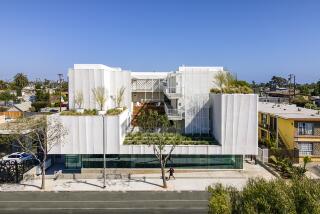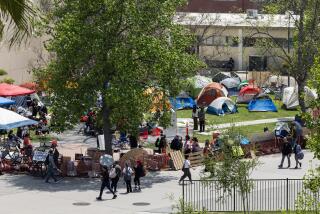USC’s good-neighbor policy
The University of Southern California has not always been the best neighbor. In recent years, as the population of undergraduates from out of state has grown, students have overwhelmed the university’s supply of campus housing and descended on the neighborhood, where opportunistic property owners jacked up rents that students could pay and displaced families that couldn’t afford them.
Now the university has a chance to repair some of the disruption it has caused, and, wisely, it is doing that. As part of its ambitious $1-billion construction project north of its Jefferson Boulevard campus boundary, the school is offering numerous concessions to the community it will affect. Most important is a plan to build about 4,000 more beds for students, which could dramatically increase the percentage of undergraduates in university housing (including fraternity houses) from 40% to 70%. This works for everyone. It will relieve much of the pressure on neighborhood housing stock even as it enhances students’ academic experience by allowing them to live in USC housing.
The new project, called the Village at USC, does not displace any neighborhood residents. Instead, it will replace the aging and underutilized shopping center known as the University Village with academic, commercial and housing facilities and open space, all on 200 acres of land owned by USC. In exchange for city approval of this multi-project plan, which is pending, the university must enter a development agreement with the city. It is this agreement that is the result of years of talks with city officials and community activists.
In addition to the student facilities, the university has agreed to give $20 million to a city fund to create and maintain affordable housing in the community around USC. If the university achieves the threshold of housing 70% of its undergraduates on its property, it will have to pay only $15 million into the fund. Everyone, from community groups to the university to the city, is pleased with this.
The university has also pledged to hire 30% of the workforce for the project from within a five-mile radius of the campus. That includes both temporary construction jobs and permanent new jobs.
These are smart steps on the university’s part, and we expect that city officials and community groups will vigilantly watch to make sure it follows through on its promises. No big university can fully control its impact on a neighborhood. But USC and its neighbors are offering a good template for how to work together so that both communities thrive.
More to Read
A cure for the common opinion
Get thought-provoking perspectives with our weekly newsletter.
You may occasionally receive promotional content from the Los Angeles Times.










